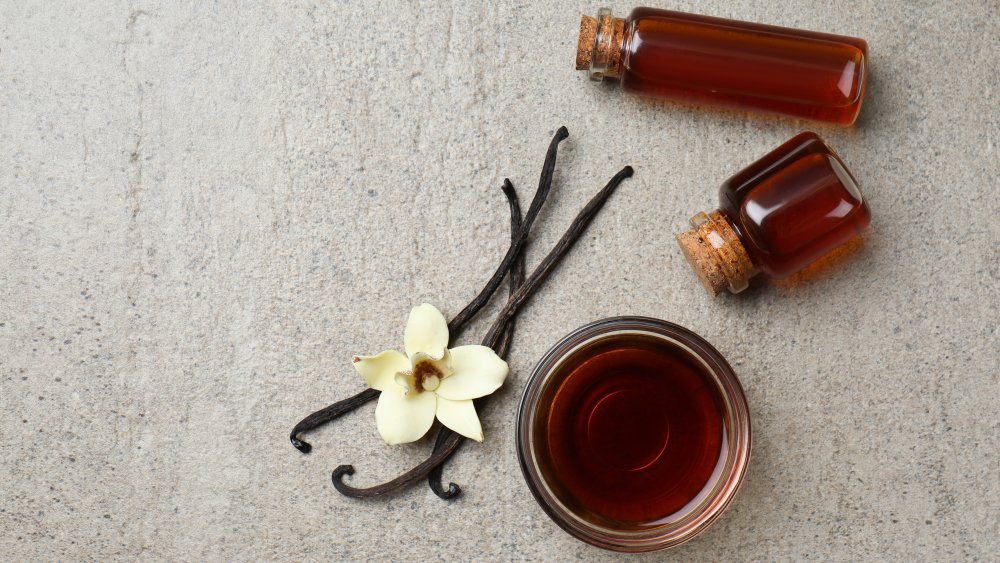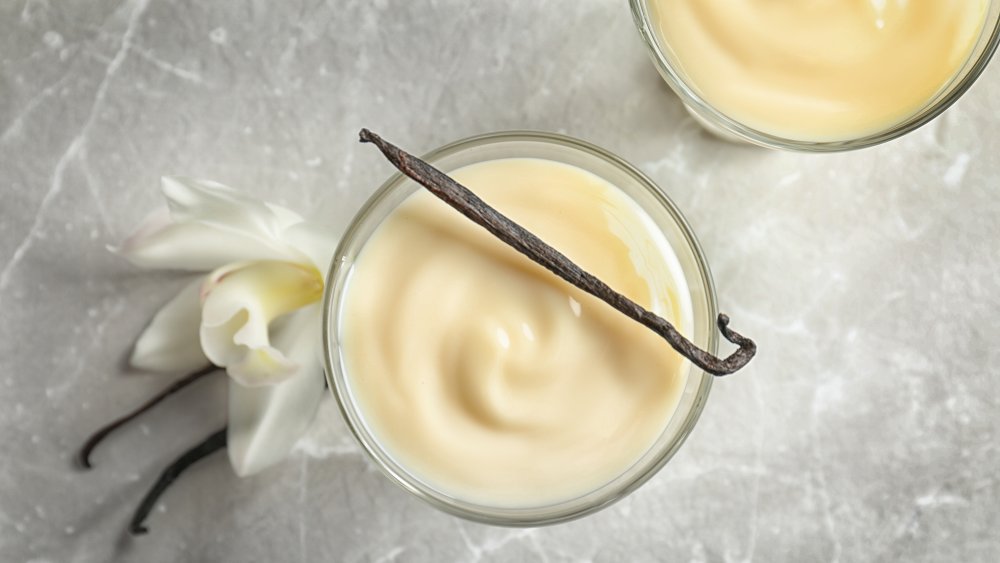The Real Difference Between Pure And Imitation Vanilla Extract
If you've ever wondered why on earth you should buy pure vanilla extract at $29.99 for 12 ounces when you could get the fake stuff for $6.49 a GALLON, look no further. There are real differences between pure vanilla, made from delicate orchid beans (yes), and artificial vanilla, literally made from petrochemicals and wood (via Scientific American). Vanilla extract may be a splurge, but it's usually worth the dough (via Kitchn). However, you can still use artificial vanilla in recipes where other flavors dominate — why use the good stuff where no one will taste the difference?
So here's how pure vanilla extract is made: vanilla beans soak in alcohol to extract their unique flavor, and according to the FDA, you can only call your product vanilla extract if it's up to their specifications (via The Spruce Eats): no less than 13.35 ounces of vanilla beans per gallon and no less than 35 percent ethyl alcohol (via FDA). Pure vanilla extract is so pricey because vanilla beans come from an orchid that is very labor-intensive to grow and is mostly found in just a few hot, humid locales like Madagascar (via Huffington Post). The pods grow once the orchid is hand-pollinated and blooms, then put into hot water and laid out to dry for months. Only then does the extraction process begin.
There's a time and a place for imitation vanilla
Most imitation vanilla, on the other hand, is mostly made with vanillin made from guaiacol, which is a precursor to a petrochemical (or a chemical derived from refining oil or gas), according to Scientific American. Yup. The rest is produced with lignin, which comes from wood (via Science Direct). That's why it's so cheap. And according to the Spruce Eats, imitation vanilla products often have a somewhat bitter after taste for people with sensitive palates. So, pro bakers say, if you're going for a vanilla custard, vanilla frosting, or vanilla cake — opt for the more delicate pure vanilla.
The good news is, you probably won't be able to tell the difference between the two versions in a dessert whose primary flavor isn't vanilla, like chocolate, spice cakes, or cookies with a lot of mix-ins. One expert recommended to The Kitchn to use a healthy balance between the two: save "the good stuff" for when vanilla flavor needs to shine, but in recipes with more bold flavors, artificial will do.

